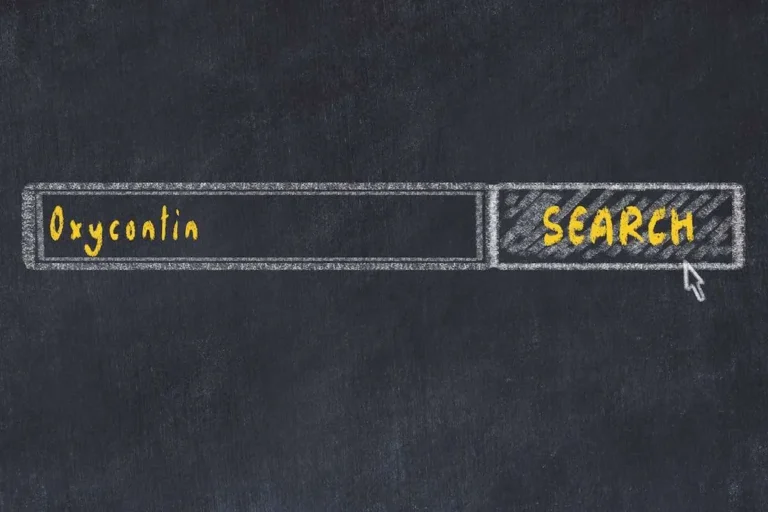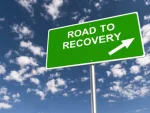How Addictive Is OxyContin: Recognizing the Symptoms and Causes of Addiction

The misuse of prescription drugs with analgesic properties may lead to a host of adverse effects. Learning how to recognize the symptoms of OxyContin addiction is the only way to use this semisynthetic opioid safely to reduce pain. Even individuals who take it for medical purposes are not protected against the detrimental consequences of its prolonged usage. In this article, we will answer the question: “How addictive is OxyContin?” and determine the signs of opioid use disorder and move toward healing.
Why is OxyContin so Addictive?
OxyContin is a slow-release painkiller that is safe to use if an individual follows the prescription guidelines. When a person who takes medical drugs starts to experience cravings, they may be tempted to increase the dosage or the frequency of use without consulting healthcare professionals.
Those who take it for recreational purposes, knowing its ability to improve mood and alleviate fatigue, find themselves in danger. Many people wonder: “How addictive is OxyContin?” One of its main ingredients is oxycodone hydrochloride. It is dangerous enough that any attempt to stop will be accompanied by withdrawal symptoms.
Drug dependence is caused by the endorphin release. People who battle depression increase the dosage of the drug without considering the possible ramifications of misuse. OxyContin was created to alleviate pain gradually. Its extended effect increases its appeal in the eyes of individuals who suffer from chronic and acute pain.
Nevertheless, some patients unreasonably increase the dosage to get high. An ability to get instant relief from anxiety drives them to use it longer than recommended. Using the euphoria effect it produces as their shield against pain, patients develop a strong opioid addiction.

Take back control of your life and start on the road to recovery now.
Major Risk Factors Leading to Addiction
While oxycodone is used in many medications, in OxyContin, it reduces pain slowly. People who are looking for an instant effect and increase the dosage to experience euphoria are psychologically predisposed to overuse. Similarly, those who suffer from chronic conditions and develop high tolerance over time decide to take higher doses than prescribed.
Another question that is worth asking is, “How addictive is OxyContin if a patient takes it longer than recommended?” Prolonged usage, in most cases, leads to heavy dependence. While no single factor makes people more vulnerable, when combined, they lead to unfavorable outcomes. Below, we have outlined the main constituents contributing to an OxyContin addiction:
- Environment: Employment status, income level, and immediate surroundings heighten susceptibility to the effects of the drug. Patients who are in frequent contact with addicted individuals also endanger themselves, as it becomes arduous for them to follow a healthy lifestyle.
- Mental state: People with psychological conditions should strictly follow the prescription to avoid treating anxiety or depression using this drug. While it can temporarily improve a mood, medication should not be used as a replacement for dialectical behavior therapy (DBT) or other time-tested methods. Risk-takers are fully aware of the negative consequences of overdosing but still disregard warnings.
- Genetic background: Inherited DNA markers predispose people to substance misuse. Besides, women are at higher risk as they often experience chronic pain.
When a positive effect wears off and a person experiences pain again, they start experimenting with different intake methods. Crushing tablets and then consuming them dissolved or making injections intensifies the effect, triggering an instant endorphin release. If an individual is susceptible to oxy abuse, they are likely to explore other similar methods bringing instant gratification as well.
How to Recognize the Symptoms of OxyContin Addiction?
When a patient starts to overuse any medical drug, their behavior patterns drastically change. Prolonged fatigue, bellyache, and sweating are the most noticeable signs of OxyContin addiction.
Some people develop constipation, while others lose their appetite. Substance abuse may also result in cardiovascular and respiratory problems. Other signs one should pay attention to include:
- Hypotension
- Dizziness
- Itching and cramps
- Urinary retention
- Swelling in limbs
An overdose may lead to a person falling into a coma. To avoid the worst outcome, patients who take this prescription drug regularly should be able to recognize the signs of behavioral changes. While the drug temporarily alleviates the effects of depression, it intensifies panic attacks and anxiety over the long term.
Because of OxyContin addiction, a person’s emotional state becomes unstable, they disregard their responsibilities and start having paranoid thoughts. Insomnia also frequently signals drug misuse and contributes to worsening physical health. An overdose may lead to hallucinations, making it impossible for a patient to remain a part of a community.

How to Progress Through the Withdrawal Stage Safely
People who start using OxyContin disregarding the recommendations of healthcare professionals abuse it by increasing the dosage and the frequency of intake. Addicted individuals utilize it as a replacement for other medications, such as morphine. OxyContin abuse leads to addiction when a person becomes fully dependent on regular consumption.
Even if a person recognizes the potential risks and decides to stop taking the drug, the occurrence of the first withdrawal symptoms may convince them to return to unhealthy habits. They typically include:
- Extreme anxiety
- Irritability
- Cravings
- Sweating
- Sneezing
- Disturbed sleep
Dealing with the root cause of the problem instead of addressing the main issue is the only effective way to become healthy. However, instead of undergoing substance abuse treatment, addicted patients often put off this step and make multiple doctor appointments to get as many prescriptions as possible. This is when they should stop and ask themselves: “How addictive is OxyContin?”
Because of the misuse of this drug, working professionals become prone to slacking and stop seeing career goals as top priorities. At the withdrawal stage, patients tend to grow distant from their family members and other important people in their lives. As a result, they struggle to stay in remission.
Unless a person goes into rehab or stops using the drug and changes the environment completely, the OxyContin addiction results in a host of health problems:
- Vision impairment
- Organ damage
- Injuries
Facing unemployment and damaged family relationships, many patients start having suicidal thoughts. Recognizing that they have the power to transform their life and move through the withdrawal stage successfully is the first step toward rehabilitation.

This can be a difficult journey, but you don’t have to go it alone. Let us be your guide and provide you the environment needed to regain control of your life and begin the path to recovery.
Becoming Addiction-Free
After detecting the first signs of OxyContin addiction, be sure to consult your doctor and follow their recommendations to mitigate the risks. Cognitive-behavioral therapy (CBT) remains one of the most cost-effective solutions for those who want to embrace a healthy way of life.
People who ask: “How addictive is OxyContin?” often disregard the fact that behavior changes related to the misuse of the drug may have an even more destructive effect on a person’s life than its components.
Becoming isolated from close people who can support them on the path to OxyContin recovery, patients often fail to grasp the significance of staying in a safe environment. EcoSoberHouses offers a housing solution to patients with different backgrounds.
Our clients enjoy the benefits of secure housing where they can communicate with others. Become a part of a community of individuals with similar goals and aspirations. Our program will help you discover motivation to become a better version of yourself. We have created a non-judgmental environment where everyone can focus on personal development and growth.
Contact us now anonymously and learn how to get your life on the right path by re-discovering your inner strength.




